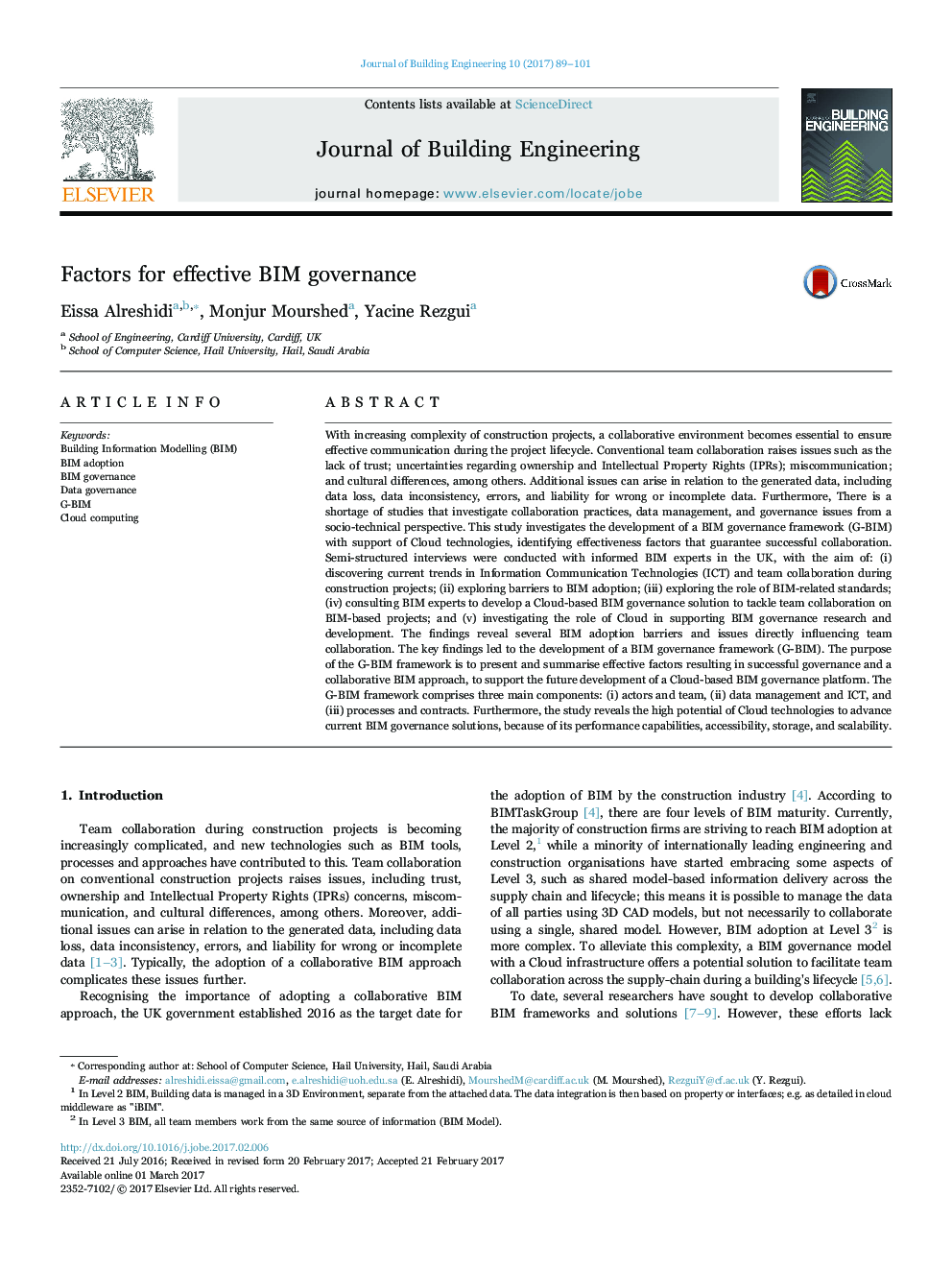| Article ID | Journal | Published Year | Pages | File Type |
|---|---|---|---|---|
| 4923096 | Journal of Building Engineering | 2017 | 13 Pages |
Abstract
With increasing complexity of construction projects, a collaborative environment becomes essential to ensure effective communication during the project lifecycle. Conventional team collaboration raises issues such as the lack of trust; uncertainties regarding ownership and Intellectual Property Rights (IPRs); miscommunication; and cultural differences, among others. Additional issues can arise in relation to the generated data, including data loss, data inconsistency, errors, and liability for wrong or incomplete data. Furthermore, There is a shortage of studies that investigate collaboration practices, data management, and governance issues from a socio-technical perspective. This study investigates the development of a BIM governance framework (G-BIM) with support of Cloud technologies, identifying effectiveness factors that guarantee successful collaboration. Semi-structured interviews were conducted with informed BIM experts in the UK, with the aim of: (i) discovering current trends in Information Communication Technologies (ICT) and team collaboration during construction projects; (ii) exploring barriers to BIM adoption; (iii) exploring the role of BIM-related standards; (iv) consulting BIM experts to develop a Cloud-based BIM governance solution to tackle team collaboration on BIM-based projects; and (v) investigating the role of Cloud in supporting BIM governance research and development. The findings reveal several BIM adoption barriers and issues directly influencing team collaboration. The key findings led to the development of a BIM governance framework (G-BIM). The purpose of the G-BIM framework is to present and summarise effective factors resulting in successful governance and a collaborative BIM approach, to support the future development of a Cloud-based BIM governance platform. The G-BIM framework comprises three main components: (i) actors and team, (ii) data management and ICT, and (iii) processes and contracts. Furthermore, the study reveals the high potential of Cloud technologies to advance current BIM governance solutions, because of its performance capabilities, accessibility, storage, and scalability.
Related Topics
Physical Sciences and Engineering
Engineering
Civil and Structural Engineering
Authors
Eissa Alreshidi, Monjur Mourshed, Yacine Rezgui,
